“We are taking the full force of climate change”: less rain, dried up springs, in Bédarieux, the obsession with water resources
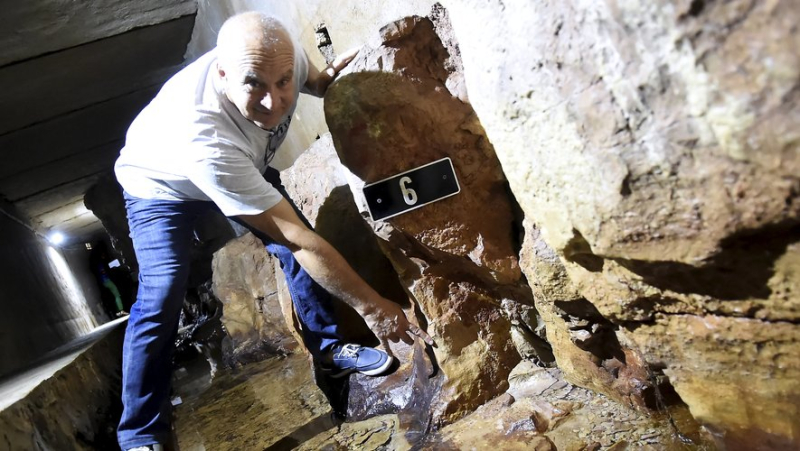
Philippe Anglade, deputy mayor in charge of the “water” file in Bédarieux, on the “Douze sources” site: the water supply has collapsed. Midi Libre – SYLVIE CAMBON
The Hérault commune of 6,000 inhabitants, located at the gates of the Haut Languedoc regional park, is multiplying initiatives to alleviate the shortage: connection to a neighboring commune, rehabilitation of an abandoned source, search for new deposits, hunting for leaks, public awareness… "We have to imagine the future", Mayor Francis Barsse projects, "very worried".
Better everywhere except a deficit in recharge in the Aude and the Pyrénées-Orientales, and “a degraded situation on the west of the Languedoc coast and in Roussillon” : the inventory of groundwater tables, drawn up by the BRGM, echoes a situation of alert, even crisis, of the government site VigiEau, of drinking water resources, surface and groundwater.
On 1 August, the prefect of Gard announced “the first measures to restrict uses" on the Ardèche watershed, classified as drought alert. And vigilance is required in the "Vidourle, Arre, Hérault, Gardons, Cèze" zones.
In Hérault, the water resource monitoring committee, which met on August 6, activated a “vigilance” in the east, and triggered levels of “reinforced alert” and of "crisis" in the west of the department.
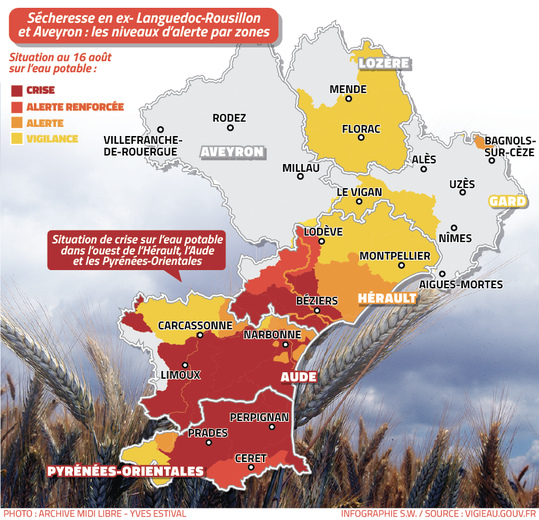
The state of affairs as of August 16. Midi Libre – SOPHIE WAUQUIER
"The situation is improving, except here", laments Francis Barsse, mayor of Bédarieux, who checks the flow rate of the two springs that supply the town, the Douze and the Joncasse, every morning. The bad news piles up on a piece of paper where the numbers are written tightly: “On August 13, we are at 28 m3/hour at the Douze. On June 14, it was 34 m3. We are losing 5 m3/hour per week. Three years ago, we were at 180 m3/hour”, laments the elected official, diverse left, retired from the national forestry office.
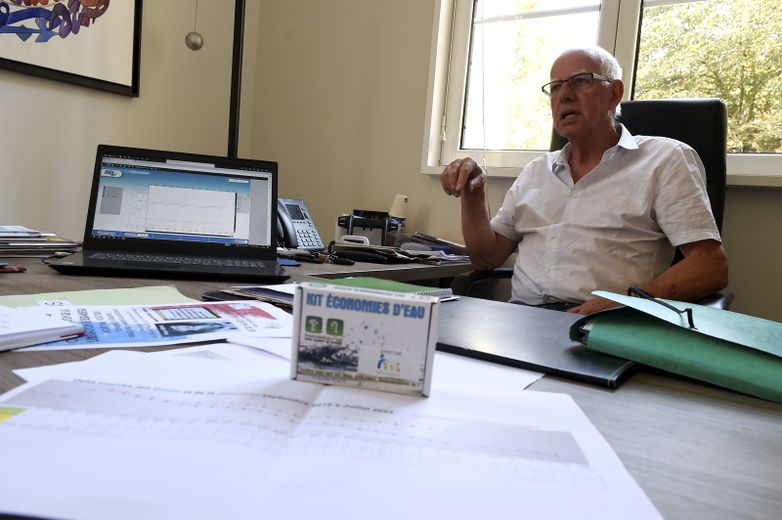
Francis Barsse, mayor since 2020, is informed every morning about the situation in the town. Midi Libre – SYLVIE CAMBON
In La Joncasse, the flow rate fluctuates between 85 and 115 m3/hour, "depending on the day". "Without reason" identified, she "dropped out twice" last summer.
"I requested an exemption to water the stadium. Otherwise, it will have to be redone and I can't afford it"
"We are taking climate change head on", comments Philippe Anglade, the deputy in charge of water management in the town, located at the gateway to the Haut-Languedoc regional natural park. At the Douze, the water has gurgled for a long time, pouring into a dried-up canal that no longer has anything of a “levada”.
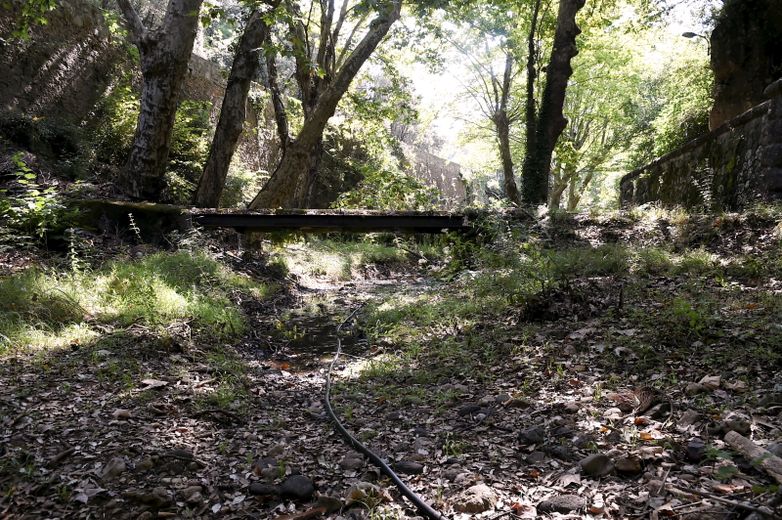
To the north of the town, the Vèbre is dry. Midi Libre – SYLVIE CAMBON
From 1 to 12, at each of the old arrivals, it oozes, at best. Below the meticulously locked 1890 building that houses the arrival of the springs, the Vebre is dry, people used to bathe there.
“Following the floods of 2014, the bridge had been raised”, remembers the deputy. It now overlooks an empty stony bed invaded by deceptive vegetation. In Bédarieux, “the oaks are starting to die” and the figures are stubborn, the curves are collapsing. It rains less, and the resource is becoming scarce. “The last major recharge was in 2022, when 300 millimeters fell in a few days”, remember the elected officials. Since then, the storms have been too violent, and they often strike elsewhere.
In thirty years, 200 millimeters of water lost per year
Rainfall analyses in the commune of Bédarieux show a clear decline in precipitation levels over the past thirty years: – 18%. From 1994 to 2000, the average rainfall was 1140 mm per year. It fell to 940 mm from 2010 to 2021, or 200 millimetres less. Over the past five years (September 2019-August 2024), production at the Source des Douze has collapsed: by 84%. And by 30% at the same time for the Source de la Joncasse.
This year, Francis Barsse wants to avoid the restrictions imposed on the population in 2023.
He still succeeds, at the cost of drastic measures: "We haven't had flowers in the town, we wash the streets and water the trees using the water recovered and stored after the municipal swimming pool was emptied last year , it also allows us to water the stadium twice a week. Otherwise it will have to be done again and I can't afford it. I asked for an exemption from the prefect who granted it to me", explains the mayor, forced to deploy an action plan that he would have had to launch "ten years ago". The State representative also assured the elected official, on July 30, that he would study financing for "water& quot; of the municipality higher than the current maximum limit of 80 %.
"If we don’t have water, the development of the town stops"
The needs, however, do not change for a population that remains at 6,000 inhabitants, +2.5% at the last census, and which must deal with the activity of economic players, concrete factory, laundry, etc. “We need 2500 m3 and if we don't have water, the development of the commune stops”.
For a year, in the urgency and “concern”, because “we must be cautious and imagine the future”, initiatives are flying: “We have reactivated a borehole in the commune of Villemagne-l’Argentière thanks to an agreement with our neighbors, we have also reached an agreement with the Mare et Libron intercommunal syndicate to draw a pipe that can bring us water…"
Solidarity is a two-way street : Bédarieux has also purchased a 10 m3 tank that is helping the hamlets that are suffering.
These initiatives have a cost: 700,000 euros for the drilling which gives 35 m3/hour. 300,000 euros for the “pipe”, with a drawing right of 600 m3 per day which will have to be paid at a high price, 1.20 euros per cubic meter, the mayor calculates. In total, this is already more than a million euros of new expenses, covered urgently by a loan. The burden was unbearable for a municipality that operates with 8 million euros of investments, and as much for operations, including 1.5 million euros for water.
For a year now, finally, the municipality has been tracking down leaks: “We dig, we repair”, assures Philippe Anglade, who reports an 80% return on the network. Bédarieux is also actively looking for water in his basement. And raise awareness among those affected, starting with swimming pool owners. Hundreds of water-saving kits have been distributed free of charge. From there to changing habits… "People don't always understand".
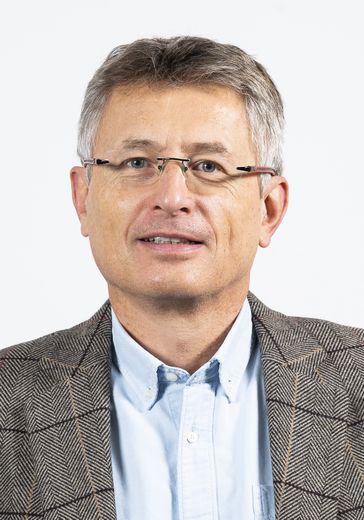
Nicolas Chantepy, deputy director of the Rhône Méditerranée Corse water agency. DR
Nicolas Chantepy, Deputy Director General of the Water Agency: “A Sense of Urgency”
Nicolas Chantepy is Deputy Director General of the Rhône Méditerranée-Corse Water Agency.
Has the issue of water resources become omnipresent among elected officials ?
Yes, the trigger was the drought of 2022, which was both very long and very severe across almost the entire national territory. We clearly felt an awareness, both among communities and among industrial players. Farmers had been aware of the problem for a long time. Throughout the south of the basin, we now have a certain number of communities that have problems with resources that are decreasing significantly.
The situation is questioning communities again. When the resource is abundant, we can afford to have leaky networks, to not pay attention. When there is a threat of shortage, we ask ourselves the right questions. The problem is that we often ask them a little late, with a sense of urgency.
Where are the “black spots” today ?
In a fairly general way, in the departments of Pyrénées-Orientales, Aude, and in the western part of Hérault, the situation is quite tense.
The problem is more acute in small, isolated municipalities. One of the solutions, when you have a failing resource, is to work in a network.
Solidarity plays a role or is it every man for himself ?
The more we manage drinking water resources at the intercommunal level, the more "resilient" we are, the more we are able to face problems. A single resource is by definition fragile and can become insufficient.
How does the water agency intervene ?
We intervene to improve the performance of networks, to reduce leaks. And in areas identified as deficit areas, in which abstractions exceed capacity, we finance PTGE, territorial water management plans, to work on reducing abstractions: when you are an industrialist, you try to recycle water, when you are a farmer, you move to economical irrigation systems, when you are a community, you reduce leaks. We manage around 2000 files per year.
And we launched calls for projects, in the context of the drought, to identify “black spot” communities, where less than 50% of the water collected reaches the tap.
There are many of them”?
Paradoxically, yes. Including in the Pyrénées-Orientales. I would like to remind you that the water plan, launched by the President of the Republic last year, has a sobriety objective, to reduce all withdrawals by 10%. One solution is to reduce leaks, the other is to invite individuals to reduce consumption, it sometimes works, as we saw last year. But this last option leads to a loss of revenue, the price of water must be increased to continue to provide an efficient service.
You are also working on quality…
On a certain number of catchments, we have pollution problems, particularly agricultural. We are trying to reduce them, because when we abandon a resource, we penalize ourselves in a tense context, and the situation is even more difficult.
These problems will only increase in the years to come ?
Yes, the situation we experienced in 2022 will become more and more frequent. We need to consume less, while we will need more water, particularly for agriculture. We have adaptations at all levels. Knowing that we are a blessed country in France. We have a situation that is becoming tense, we can no longer afford to waste but we are not in the situation of Spain, Italy or Greece.
Climate simulations, in 2050, show that we will have the same amount of rain. But precipitation will be much lower in summer and more abundant in winter. And they will fall more brutally, with more runoff. With the same amount of water, we will have more arid landscapes.
The last element that climate change brings is that there will be less snow, which is a deferred supply of water resources, a form of storage. Projections for 2070-2080 indicate a virtual disappearance of glaciers. The Rhone, fed by melting snow and glaciers, will change its hydrological regime.
I subscribe to read the rest




